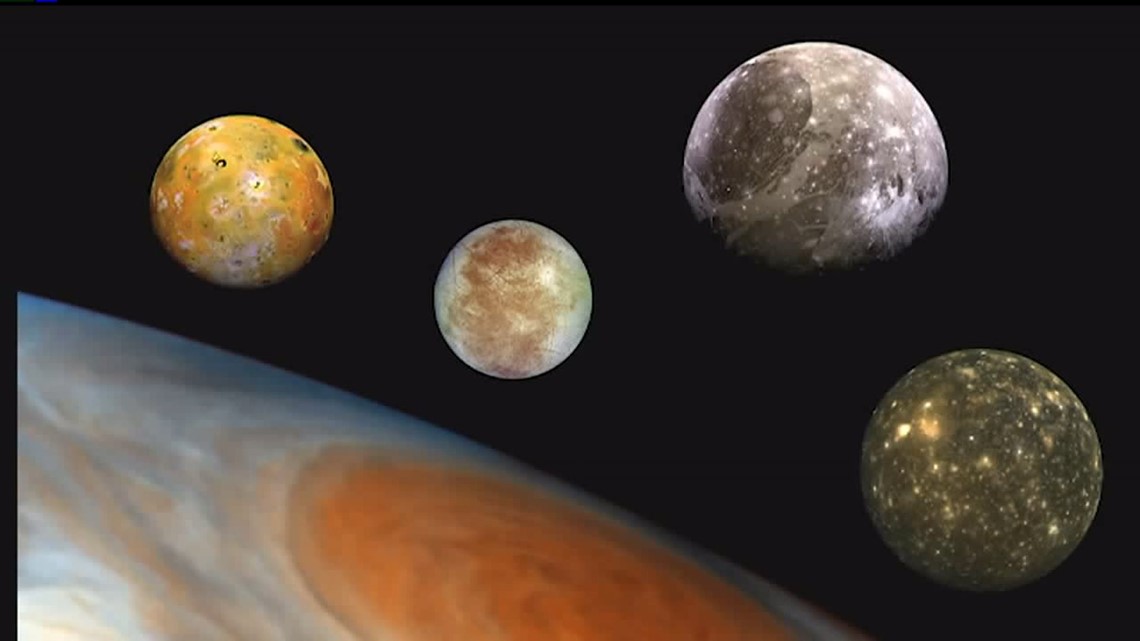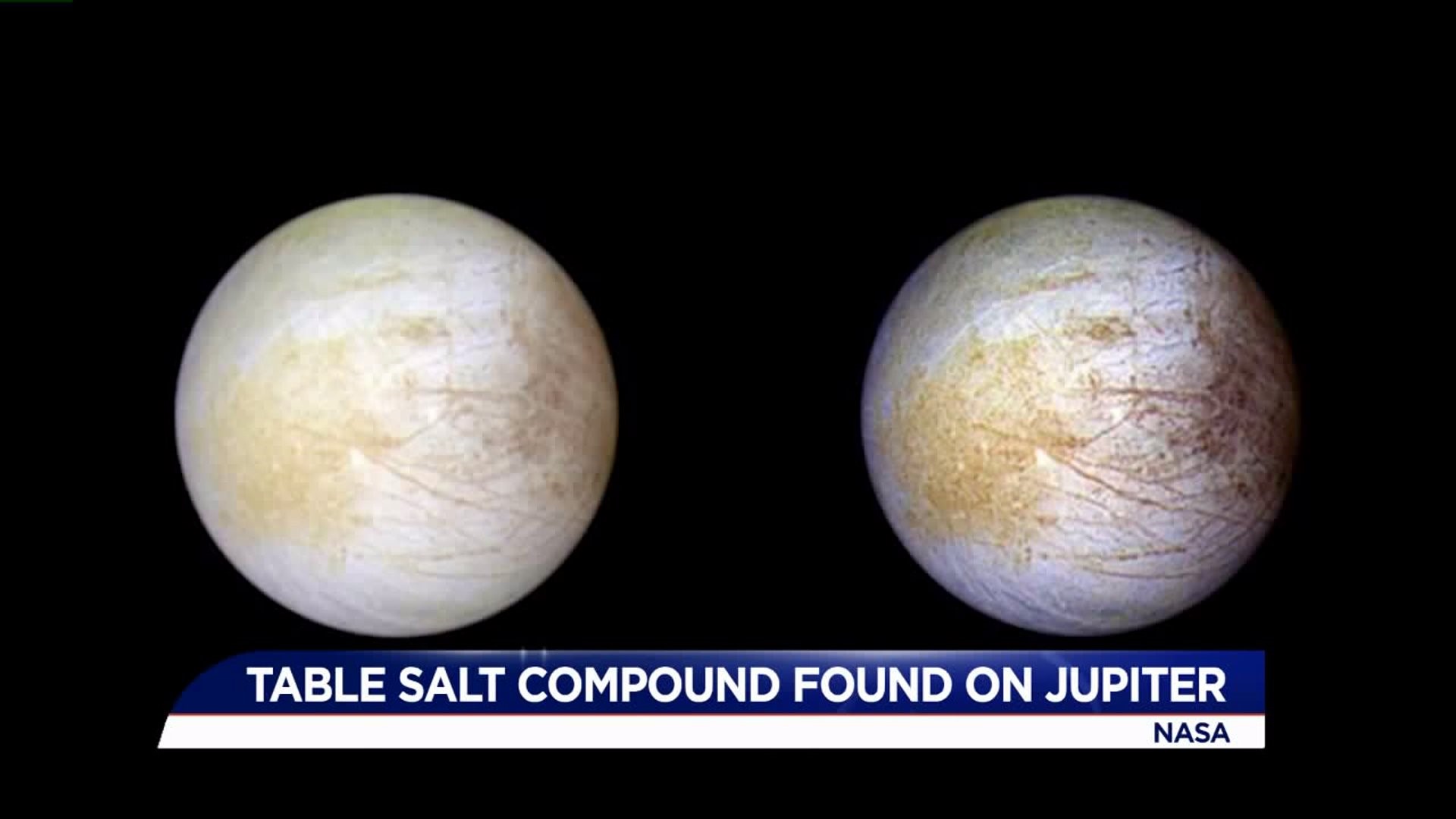(CNN) -- Although Jupiter's moon Europa looks alien to us, it contains an ingredient familiar to us: sodium chloride, otherwise known as good ol' table salt.
It's also a main component of sea salt. Europa is one of the intriguing water worlds in our solar system and potentially a place where life could exist in a subsurface ocean. The discovery of sodium chloride means Europa's ocean could look more like those on Earth and even possibly include salt. Now, astronomers may have to think differently about the composition of Europa's ocean.
Planetary scientists did a visible-light spectral analysis of the yellow spots on Europa to find the salt. A study published Wednesday in Science Advances sheds light on the discovery.
Previously, NASA's Voyager and Galileo spacecraft performed flybys of Europa, which led scientists to discover that the moon has a salty liquid water ocean beneath an icy shell. An infrared spectrometer aboard Galileo studied the shell and detected water ice and magnesium sulfate salts, which are similar to Epsom salts. It was believed that the shell was similar in composition to the same ingredients that made up the ocean.
"People have traditionally assumed that all of the interesting spectroscopy is in the infrared on planetary surfaces, because that's where most of the molecules that scientists are looking for have their fundamental features," said Mike Brown, study co-author and the Richard and Barbara Rosenberg Professor of Planetary Astronomy at the California Institute of Technology, in a statement.


But the W.M. Keck Observatory in Hawaii provided new data with higher spectral resolution to show that the salts weren't magnesium sulfates.
"We thought that we might be seeing sodium chlorides, but they are essentially featureless in an infrared spectrum," Brown said.
Kevin Hand, a scientist at NASA's Jet Propulsion Laboratory, took ocean salt samples from Earth and hit them with radiation to simulate what it might be like on Europa. The sea salt changed color and could be identified in the visible light spectrum as yellow.
This was similar to an area on Europa called Tara Regio, which has a distinct yellow color.
"Sodium chloride is a bit like invisible ink on Europa's surface. Before irradiation, you can't tell it's there, but after irradiation, the color jumps right out at you," Hand said.
Follow-up observations with the Hubble Space Telescope confirmed that the yellow color of Tara Regio was due to irradiated table salt on Europa's surface.
"Magnesium sulfate would simply have leached into the ocean from rocks on the ocean floor, but sodium chloride may indicate the ocean floor is hydrothermally active," said Samantha Trumbo, lead study author and California Institute of Technology graduate student, in a statement. "That would mean Europa is a more geologically interesting planetary body than previously believed."

